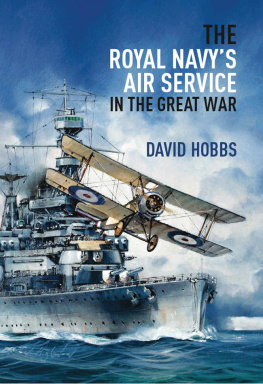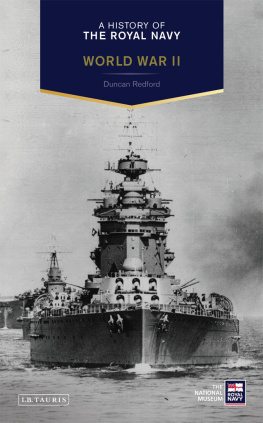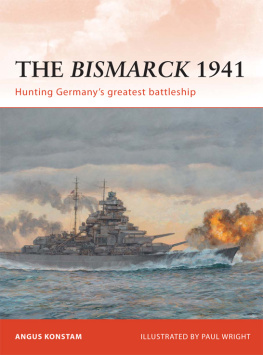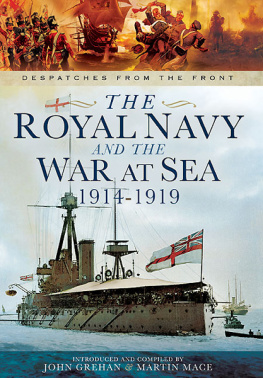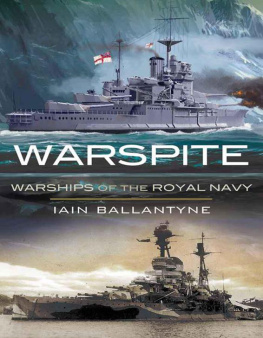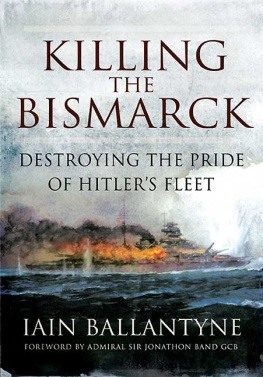About the Author
Mike Rossiter is an independent documentary filmmaker, whose work has been nominated for BAFTA and EMMY awards. He won the Golden Fleece at the Dijon Film Festival for his documentary on the attempted recovery of the B29 bomber from northern Greenland. In 2001 he filmed the search and recovery of the body of Donald Campbell and his record-breaking jet boat, Bluebird, from Coniston Water. In 2004, he filmed the discovery of the wreck of the Ark Royal. He lives in North London.
www.booksattransworld.co.uk
About the Book
HMS Ark Royal is one of the Royal Navys most iconic ships. When she was launched in 1938 she was one of the most sophisticated weapons at the disposal of the British Admiralty. The aircraft carrier was the latest, and soon to be one of the most feared, developments in naval warfare. In her first two years of operation the Ark Royal survived countless attacks, and was considered one of the luckiest ships in the Navy.
In June 1941 the Ark Royal won one of Britains most famous naval victories, sinking the German battleship, the Bismarck, after she had ravaged the British fleet in the Atlantic. It was a signal victory that resonated around the world. When the Ark Royal returned to the Mediterranean, where her aircraft continued to defy the Luftwaffe, Hitler was determined to sink her.
Within weeks, the Ark Royal was destroyed while sailing off the coast of Gibraltar, torpedoed by a German U-boat. There she rested, one kilometre below the surface of the Mediterranean, until her wreck was discovered by Mike Rossiter in 2004.
In gripping detail, and using the testimony of survivors of the sinking and men who lived, flew and fought on the Ark Royal, Mike Rossiter tells the remarkable life and legend of this most famous of ships.
Acknowledgements
Throughout the book, I hope I have mentioned everyone who was instrumental in helping me find the wreck of HMS Ark Royal, or in finding out more about its past. However, there are a few people whose contribution was vital. The first was Rick Davey, of C&C Technologies Inc., without whose advice and experience the project would probably never have got started. In addition, I have to thank Thomas and Jimmy Chance, the owners of C&C Technologies, who offered the use of their ship Rig Supporter, and its highly sophisticated equipment, without any consideration of a return for themselves or their company.
The final key contribution to the search for the Ark Royal was provided by Paul Allen, who offered his yacht Octopus and everything that was necessary to film the wreck, and to care for and entertain the Ark Royal crew members who came aboard. I also have to thank Bonnie Benjamin-Pharris, and Jacqui Sullivan at Vulcan Productions for putting up with me.
I would like to thank all of the former crew members of the Ark Royal who gave freely of their time. In particular I must mention John McCrow, whose knowledge of the Ark Royal remains remarkably detailed after all these years, and who spent a great deal of time transferring his knowledge on to tapes and letters for my benefit. There was far too much to include all of it in this book, but I hope it will soon see the light of day.
I received a great deal of advice from Professor Andrew Lambert at Kings College, whose insight often helped clarify my confusion, and from Adam Harcourt-Webster, a colleague at the BBC, whose knowledge of the history of the Second World War often astounded me. I was greatly encouraged by my agent, Luigi Bonomi, and helped considerably by Simon Thorogood, and others at Transworld.
Finally, I must thank my wife Anne, and my two sons, Alex and Max, for putting up with endless disrupted weekends and holidays while I confronted the unfamiliar prospect of writing a book. Needless to say, any errors that the patient reader might discover are solely my responsibility.
1
T HE S EARCH B EGINS
IN RECENT YEARS , many documentaries and films have been made about one of the key naval encounters of the Second World War: the battle in May 1941 between HMS Hood, then the flagship of the Royal Navy, and the giant German battleship Bismarck. After a brief fight, direct hits from the Bismarcks massive guns caused the Hood to explode, killing most of her crew. It was a devastating shock, to the Royal Navy, to Churchill and to the public, at a time when British morale was very fragile.
Almost every ship of the Home Fleet was mobilized in the effort to reverse this defeat, but it was the Ark Royal which proved to be the decisive factor in the Royal Navys hunt to destroy the Bismarck and exact revenge for the Hood. By sinking the Bismarck Britain avoided a humiliating defeat that might have affected the whole course of the war with Germany. For the Ark Royal, it meant that not only was she famous in the newspapers and in the newsreels, a fame that had been building since she was launched, but she had now taken a place in history.
The search for the wrecks of the Bismarck and the Hood have themselves been the subject of many documentaries, and both have now been located on the sea bed. Why, I wondered, had the Ark not received the same treatment? Some basic research quickly told me that the Ark Royal had herself been sunk in the Mediterranean by a submarine later that same year, in November. The crew had been saved, and an attempt had been made to tow the Ark to port in Gibraltar, but after several hours she had capsized and was lost. Photographs taken at the time revealed an impressive ship that towered over the smaller destroyers clustered around her. Although heeling over in the water, she looked undamaged, and I thought immediately that the position of the wreck must be very well known, and that this splendid ship must be lying almost intact at the bottom of the ocean. It surely couldnt be any harder to locate HMS Ark Royal than it had been to find the Bismarck and the Hood.
A film director I greatly respect once said to me that the most important question to ask before shooting a scene, or indeed embarking on a major project, was not how it could be done but why it was being done. In my work as a producer I have made documentaries about other peoples fascination with the relics and icons of history. I have spent months in northern Greenland with a group of pilots and mechanics restoring the wreck of a Second World War bomber, and weeks on Coniston Water while the body of Donald Campbell and his boat Bluebird were located and recovered from the lake. I think I understand peoples interest in hidden objects from the past. When a ship or aeroplane that disappeared is rediscovered or brought back to the public gaze, the past is in some way being brought back to life and another chapter is added to the famous crafts story. Modern life changes quickly and profoundly. It seems to me that peoples curiosity when it comes to machines like the B-29 bomber and the jet-propelled Bluebird is partly motivated by a realization that they represent a period in the recent past when the world was transforming. The B-29 is an iconic aeroplane because it ushered in the nuclear age; Donald Campbell was the last of the famous record breakers, and Bluebird seemed to mark the end of that era when British superiority was a given. Was the Ark Royal such a historical symbol, in a way I had yet to understand clearly? Or was there something rather more unbalanced about my interest?
As I did more research on the Ark, I learned that there were reasons for her fame other than the action against the





